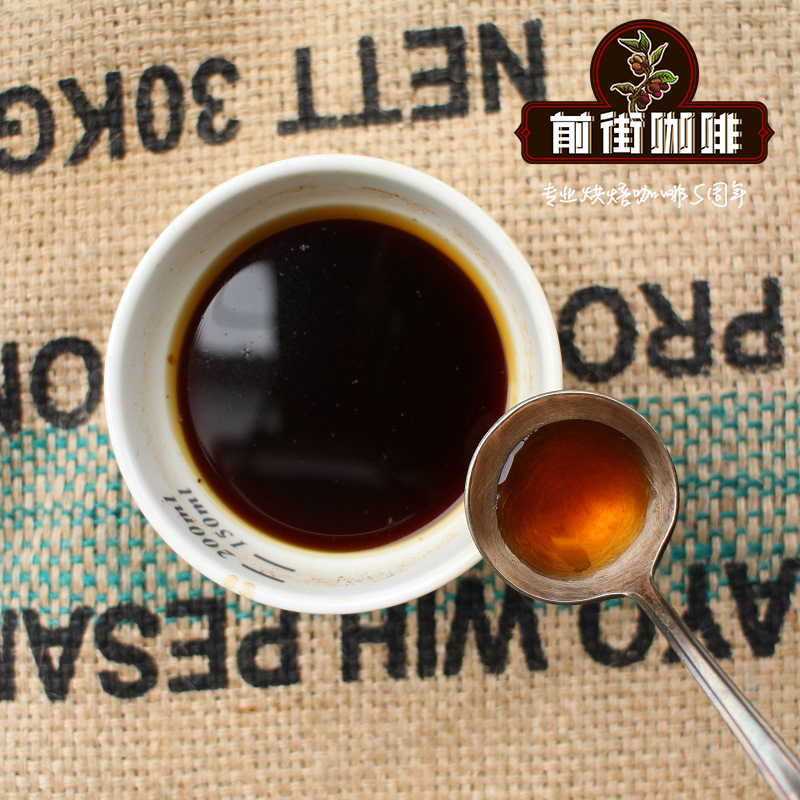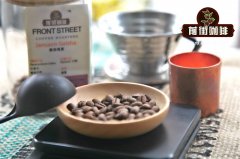Introduction to Central American Coffee Manor: coffee Elephant Bean Flavor characteristics of God-sent Manor in Nicaragua

Professional coffee knowledge exchange more coffee bean information please follow the coffee workshop (Wechat official account cafe_style)
Generally speaking, there are five major producing areas of Guaguo coffee: Huehuetenango, Antigua, Cob á n, Atitl á n and Acatenango. The recommended ones are Vivette Nango, which has the highest altitude, less rainfall, late ripening, fruit and flower flavor, and is recognized as the best coffee producing area. The second is the Andi melon area, where coffee trees are planted at an altitude of 1300 to 1600 meters above sea level. the climate is dry and the aroma of coffee is uniform, with nutty, spicy and chocolate flavors. Generally speaking, Guanguo coffee taste slender, elegant, sweet, with fruit aroma, but also more complex, rich, rich, with chocolate, toffee aroma.
Guatemala also has tropical rain forests, volcanic geology, plateau valleys and changeable microclimate, coupled with several rainfall patterns and fertile soil, which make Guanguo coffee rich in flavor. In 1845, with the establishment of the Coffee planting and Promotion Committee, coffee became an important cash crop in the area.
Flavor description: dry aromas are wine, strawberries and grapes. The palate is full-bodied with intense aromas of wine, blackberries, blackcurrants, mangoes and grapes, cranberries and berries in the middle, currants and cocoa on the finish, rich fruit flavours and wine aromas.
Country: Nicaragua production area: Matagalpa altitude: 850m-1150 m treatment method: sun grade: SHG variety: red wave
The giant elephant bean (Maragogype) is a variety of Tibica (Arabica native bean); its tree, leaves and fruit are much larger than the average Arabica.
Rare quantity and high price have always been the fate of boutique coffee beans. Compared with the giant elephant beans with less output than other varieties, it is self-evident that the price of its high-quality beans is high. As the saying goes, there are a lot of good things, and the following is worth taking a look at the reaction from the actual visit to the market.
Raw beans are expensive: water can carry a boat and overturn it. The unique conditions of giant elephant beans include that too high trees are not easy to harvest and too large fruits are not easy to wash (refer to the overview of fine (top) coffee), resulting in low willingness of coffee farmers to grow. Thus, the output is scarce and the material is precious.
Baking is not easy: big beans are an extremely severe test for the quality of the roaster and the roaster's skills. With a little carelessness, the baked beans are either raw or overcooked. What is even more frightening is that the baking is uneven, both raw and cooked.
Misconception: the shortcomings of beans mentioned in many coffee books and teaching materials. Although the beans are beautiful, the contents are thin, the flavor is insipid, and so on. Indeed, in the early days and even today, bean merchants introduced consumers who valued the appearance of beans because of the beautiful size of elephant beans. Unfortunately, as a result of cost considerations, most of the low-altitude elephant beans were introduced. Just in line with coffee storytellers and the owners of bakeries and cafes, such as beans are not good beans.
Important Notice :
前街咖啡 FrontStreet Coffee has moved to new addredd:
FrontStreet Coffee Address: 315,Donghua East Road,GuangZhou
Tel:020 38364473
- Prev

Introduction to Fine Coffee Manor in America: coffee Flavor characteristics of Orange Manor in Colombia
Professional coffee knowledge exchange more coffee bean information please follow the coffee workshop (Wechat official account cafe_style) Colombia's three Codiera mountains run north and south, extending into the Andes, local coffee farmers grow coffee along the highlands of these mountains, with diverse climate production conditions; also because of changes in topography and altitude, Colombia's coffee industry
- Next

The treatment of coffee beans in Perata Manor, a boutique coffee farm in Nicaragua, Central America.
Professional coffee knowledge exchange more coffee bean information please follow the coffee workshop (Wechat official account cafe_style) Nicaragua is a country in Central America, the main economic source is coffee cultivation, so Nicaragua has a good coffee estate, coffee species is Arabica, coffee quality, flavor in the international performance is also good. Comparison of Nicaraguan coffee on the market
Related
- Does Rose Summer choose Blue, Green or Red? Detailed explanation of Rose Summer Coffee plots and Classification in Panamanian Jade Manor
- What is the difference between the origin, producing area, processing plant, cooperative and manor of coffee beans?
- How fine does the espresso powder fit? how to grind the espresso?
- Sca coffee roasting degree color card coffee roasting degree 8 roasting color values what do you mean?
- The practice of lattes: how to make lattes at home
- Introduction to Indonesian Fine Coffee beans-- Java Coffee producing area of Indonesian Arabica Coffee
- How much will the flavor of light and medium roasted rose summer be expressed? What baking level is rose summer suitable for?
- Introduction to the characteristics of washing, sun-drying or wet-planing coffee commonly used in Mantenin, Indonesia
- Price characteristics of Arabica Coffee Bean Starbucks introduction to Manning Coffee Bean Taste producing area Variety Manor
- What is the authentic Yega flavor? What are the flavor characteristics of the really excellent Yejasuffi coffee beans?

